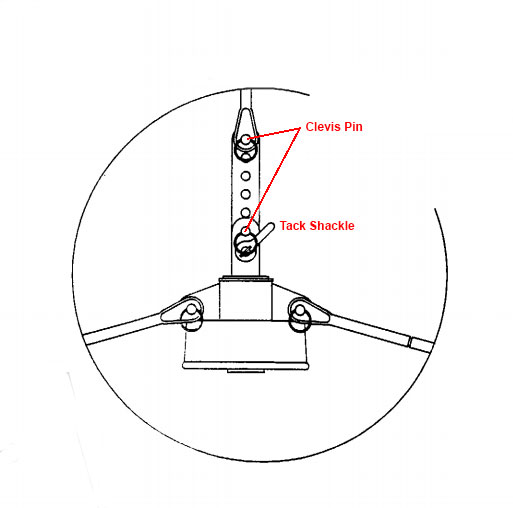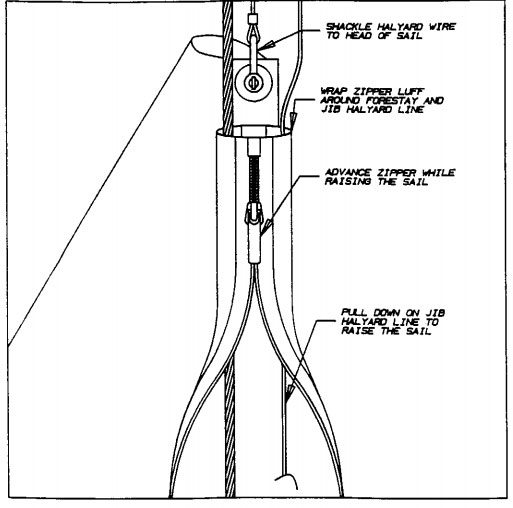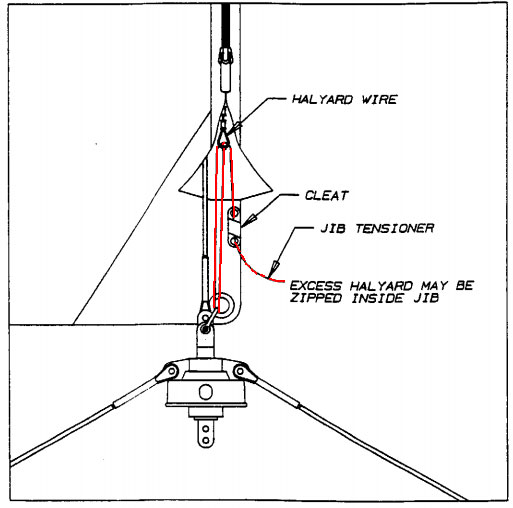Correct, there's no reason you couldn't use the halyard as the jib tensioner, aside from being inconveniently long, and maybe of smaller diameter. Hobie cat lists the halyard as 1/12" and the tensioner line as 1/8", but you'll have to check what you have. I think I'm using 1/12" line without issue. 1/8" sounds big for that tiny little sheave!
Don't worry, rigging the jib halyard/tensioner is confusing. It took me a few tries to figure it out too! (srm's graphics are excellent, btw! Where were those three years ago!?

)
Personally, I bought like 30' of line, cut a ~5' piece for the jib tensioner, tied it to the wire halyard on one end, with a bowline tide in the free end. Then I cut a ~15' piece for the jib halyard, which I tie to the bowline in the jib tensioner. In the free end, I tie another bowline. When I take down the jib, I attach the shackle at the end of the halyard wire (head of the jib) to the bowline at the end of the halyard line, creating a loop. That way, the halyard can never run away from you (with no easy way to get it down).
I've found having a separate halyard line is really useful, because once the sail is hoisted, I untie the halyard line from the jib tensioner line and use the halyard line to create a "triangle" at the base of the mast to keep the "lazy" jib sheet from getting stuck on the mast base (happens often, gets annoying when tacking). This is a nifty little trick that a lot of 18 sailors use. you tie the line off at one end of the front crossbar, string it through the diamond wires on the mast and then tie it off at the other end of the crossbar (I double up the jib halyard to do this, so it's just the right length!). the jib sheets then go over this line, so they can't get caught on the base of the mast. Don't worry about it right now, but once you rig a few times and get the basics down, give it a shot!









